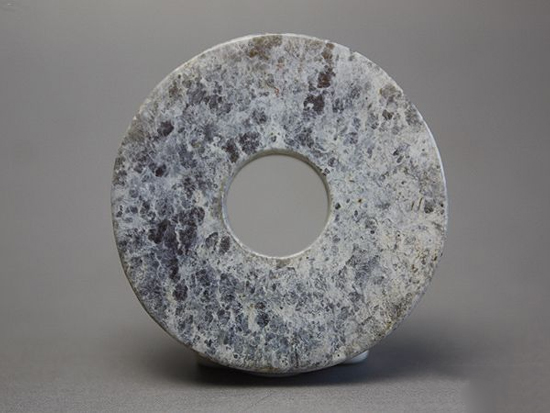We all know that jade is first of all religious and political. Jade is a ritual and divine at first. Today we introduce one of them, Yuxi. Jade is a kind of circular, scaly jade with holes, and it is not round or round. The same type of ç’§ is also "ç‘—" and "ring", the three shapes are the same, the difference is only in the size of the middle hole, the big hole is called "ç‘—", the small hole is "ç’§", the hole is between the two The "loop" between the two.
The so-called size here has a simple standard in the "Erya.": "The meat (the part of the jade) is better (the part of the hole) is called the ç’§, the good (the part of the hole) is called the ç‘—, the meat (jade Part of it is good (part of the hole) if one (substantially equal) is called the ring." The actual ratio of "meat" and "good" is not necessarily the same as that said by Erya. Some experts also suggested that “the three are collectively referred to as anthracyclines, or simply as 璧†(Xia Wei, “Classification, Naming and Use of Shang Dynasty Jadewareâ€, Archaeology, No. 5, 1983).

The mausoleum of the Neolithic Age is multi-faceted, with a few chords and a rough and simple shape. The jade in the Shang and Zhou dynasties is irregular in shape. Most of the inside and outside are not round, and most of them are plain and unadorned. In the Spring and Autumn Period and the Warring States Period, the jade is quite regular, and there are grain, pebbles, animal prints and other patterns. The Han Dynasty inherits the predecessor style, the carving work is more refined, and a large number of grain, milk, pet, and moiré appear. , animal prints and other colors. From the Han Dynasty to the Song and Yuan Dynasties, jade is rare. The two generations of the Ming and Qing Dynasties flourished again, and a large number of antique products appeared.
As a jade of rituals, only the clan, the valley and the pampas are listed in "Zhou Li". The sky is a blue color. The glutinous rice is the grain 璧, and the pupa is the pupa. The valley-shaped, such as the inverted e-letter, developed into a comma in the Warring States period, and its shape is more like a sprouting seed, so it should be related to the food on which humans depend. The pattern of the pupa is the pattern of the Puxi, which is formed by parallel lines of three different directions, forming a nearly hexagonal pattern. The Pu pattern comes from the ancient Chinese people sitting on the table and is also closely related to the daily life of human beings. In addition to the grainy scorpion and the scorpion scorpion listed in "Zhou Li", there are many kinds of decorative patterns such as milk crepe, moiré, animal face, dragon, crepe, and bird. Most of these patterns are seen in the ornament and funeral. The difference between the milky grain and the grain is that the former is only a prominent dot, and the name "milk" is containing the meaning of the origin of life. Most of the other patterns are named after the shape, or abstract, or figurative, each era has different characteristics of the times.
Although it is one of the main rituals of ancient times, it can also be used for decoration in different times and in different situations, or it can be attached to the body or suspended from the wall. In ancient times, because ç’§ is round and has the meaning of peace, it is still a symbol of peace. "Historical Records. Xiang Yu Ji Ji" records that in the banquet, Pei Gong Liu Bang fled, Zhang Liang sent it, it is the meaning of peace. . In recent years, many jade baboons have been found in the excavated ancient tombs. These jade oysters are placed on the chest or back of the deceased, some are placed between the scorpions, and the surface is decorated with enamel.
10KV Cross-linked Semi-conductive Shielding
Pyjd-10 Cable Shielding Compounds,Shielding Compound For 10Kv Cable,10Kv Cable Internal Shielding Material,10Kv Cross-Linked Semi-Conductive Shielding
Jiangsu Super Prosperous New Material Co., Ltd , https://www.jschaowang.com